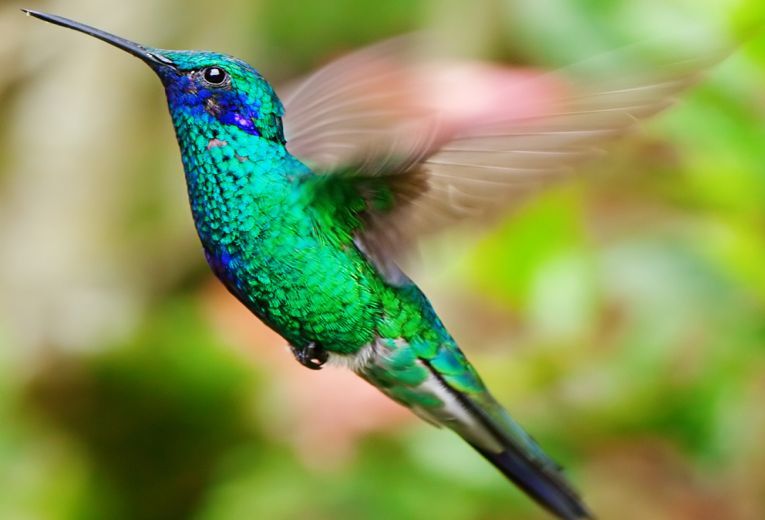When the vertebrates fly, for some reason their genome reduces in size. Bats among mammals, birds and the extinct reptilian pterosaurs all have their genome size reduced. The most diverse fliers are the birds, and this investigation has conclusively proved that 4 characteristics are heavily influenced in this way. The size of flight muscles and the heart are traits that are more affected than wing shape or size, but all are heavily involved with the reduction of gene variation in a metabolic context.
Natalie A. Wright, T. Ryan Gregory and Christopher C. Witt of the University of New Mexico (US) and Guelph University (Canada) took the phylogenetic path to research bird genome size and these 4 characteristics. The pectoral muscles take up to 30% of body weight (in humming birds and pigeons) while the heart is the second part of the "metabolic flight engine." This means it is likely that the huge energy-use powering flight drives this evolutionary reduction of the genome. The paper is published in the Proceedings of the Royal Society B.
The statistics of the exercise are crucial because they have to prove a significant amount of reduction has taken place. As many bird species as possible (422 species in 76 families and 18 orders) had to be involved. Already, flightless birds had helped to persuade researchers that flying does indeed reduce the size of bird genomes. The size of cells with nuclei appears to be reduced, giving a smaller surface area that encourages an .increase in metabolic rate, in theory. Indirectly this produces the smaller genome that produces small cells. Other theories are that body mass could also be the reason for cell size reduction, leading to easier flight, or there may be a connection with efficient neural functioning for the maneuverability required by flight.
Results as you would expect showed interesting correlations. The Piciformes (woodpeckers and toucans and relatives) showed the largest genomes size and variability. Within this group, though, two honeyguides, Indicator spp have very different genome sizes. Macromutational fluctuation among the members of the order seems to have been prolific. Perhaps their cell size benefitted from being increased for some reason! Such supposition is not allowed of course, but the birds, bats and even the pterosaurs are now going to be discussed in more detail than ever as they do indeed demonstrate a dynamic effect on the genes, in an almost reversed version of evolution!
If you would like to compare a landlubber's genome with these birds, we had a story on gorillas and the Homo genus a while ago in Gorilla genomes and hopes for hominids.










